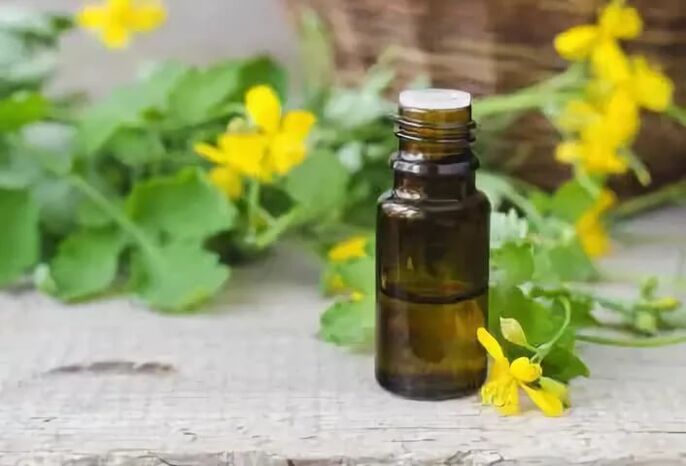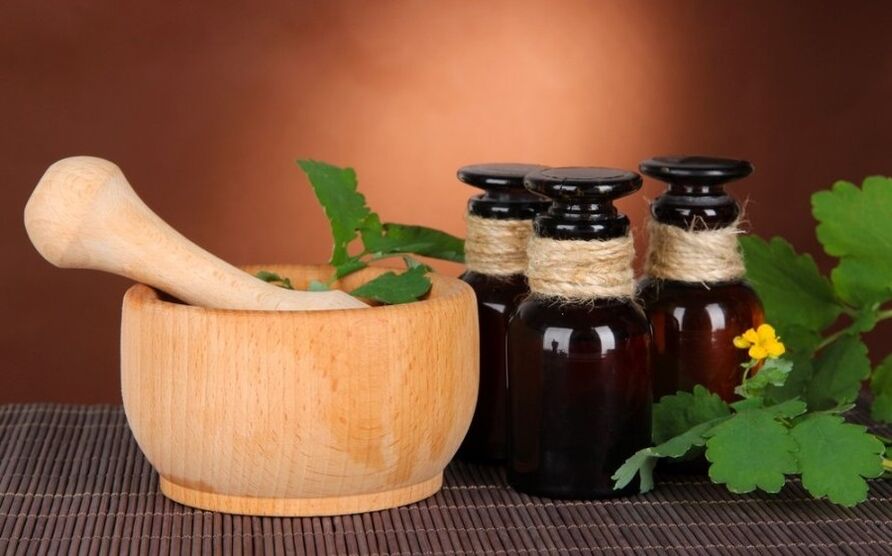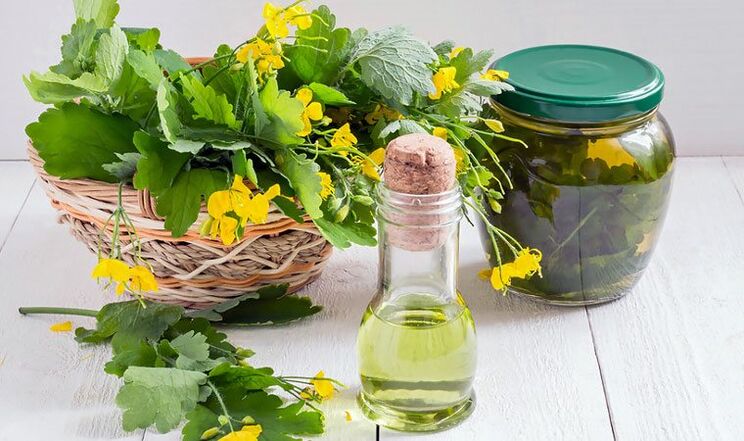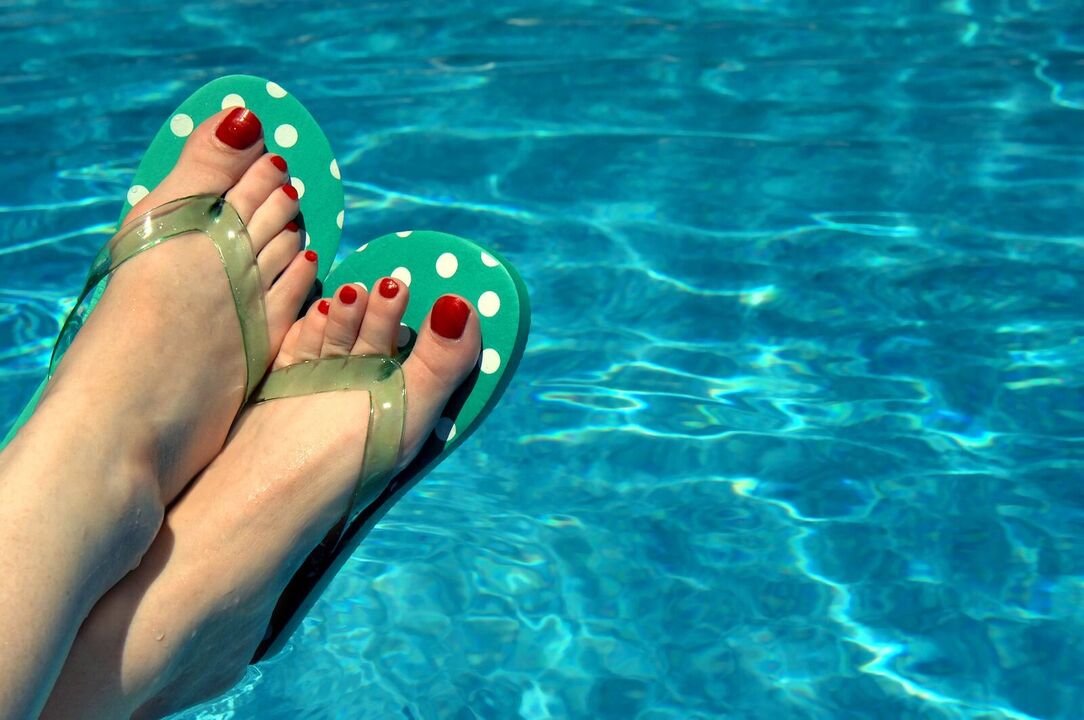
It is necessary to treat nail fungus when detecting the first signs of the disease, because if the disease is ignored, it will be more difficult to treat. In addition, the infection can spread to other nails, the surrounding skin, and the folds between the fingers. If we talk about the treatment of this disease at an early stage, then it can be cured without the use of drugs, using folk recipes. Therefore, celandine from toenail fungus is considered a particularly effective remedy.
Fungal infections of superficial tissues
The fungus that lives on the nails feeds on the creatine present in the nail plates. This leads to broken, discolored nails.
It loses its luster and elasticity, can thicken or thin, grow poorly, and become covered with waves. Usually, the disease affects the toenails, as the warm, moist environment in shoes, on the floors in saunas, baths and swimming pools is a favorable condition for the fungus.
Often, pathogens are resistant to many of the drugs that pharmacies give us to treat nail fungus. Therefore, the treatment with these drugs will not bring the expected results and lead to a waste of money.
Many of the active ingredients of herbal medicines do not cause resistance in fungi, so they are more active than synthetic preparations.
That is why since ancient times, many baths, creams, oils and tinctures made from celandine have been used to treat nails to which many fungi have not yet developed resistance.
Fungal infections are eliminated especially effectively using celandine oil, since all the active ingredients are preserved in it as much as possible.
Properties of celandine

Mountain celandine contains about 20 alkaloids, as well as chelidonin, which has the effect of slowing down the growth of microorganisms that cause various forms of fungi.
Thanks to the alkaloids, the reproduction of infections caused by fungi is prevented, as well as protozoa and bacteria that are resistant to many antibiotics.
In addition, the composition of the plant also contains the following active ingredients:
- tannin compounds;
- phenolic acids and organic acids;
- a small amount of essential oil;
- choline and histamine;
- carotene and vitamin C;
- enzymes;
- saponins;
- Spice.
Many alkaloids are more soluble in alcohol than in water compounds. And berberin, which gives the plant a yellow color, is soluble only in hot water.
Before starting to treat nail fungus with celandine, you should consult a doctor, because the alkaloids of this plant are toxic.
Of course, when used externally, they have no toxic effect on the body, but when ingested can lead to dangerous consequences.
At the pharmacy, you can buy liquid celandine from nail fungus. It is allowed to be used only in special cases, since it contains concentrated alkaline substances.
This tool destroys cells with microorganisms (fungi and viruses) already settled in them. That is why this medicine must be applied very carefully and only on the affected areas of the nail.
Medicinal preparations of celandine
Before treating onychomycosis, it is necessary to understand the features and effects of drugs based on this plant. Because of the low volatile matter content of celandine, essential oils are not made from it.
In cosmetology and pharmacology, oil extracts from the flowers of this medicinal plant are used.
Medicinal Oil Extract contains an almost complete set of FCS from this herb. This remedy is for external use only without dilution.
The therapeutic effect is explained by the anti-keratolytic, antibacterial and anti-keratinizing effects of the drug on the damaged skin and horny patches.
The celandine oil extract has a moisturizing, softening and cleansing effect on the skin and stratum corneum, eliminating flaking, irritation and dryness.
Nail fungus can be cured with this oil, but test for allergies before use, as celandine can cause a rash. To do this, oil is applied to the skin of the wrist and the results are evaluated after a quarter of an hour.
If itchiness, blisters, and redness do not go away, medication can be used to treat it.
Ointments and oils based on celandine
You can prepare your own ointments and oils to treat athlete's foot and ringworm at home. To do this, do the following:
- You will need the top of the bud of this plant. They need to be cut and washed thoroughly.
- We wait until the grass wilts a little, then grind it and squeeze its juice.
- Pour this juice with boiled vegetable oil in a water bath to disinfect.
- The remedy must be infused for an hour in the dark.
- Then, everything is poured into a dark glass bottle and left to infuse for up to three weeks.
- During this time, the oil tank must be shaken periodically.
- After this time, the oil is filtered and used for processing.
It is not necessary to collect celandine in the field, in the yard or in the forest. This plant can be grown in boxes on the balcony. In addition, hay bought at the pharmacy is also suitable for making oil. It is emphasized in the oil in the same way as the fresh ingredients.
To prepare the ointment, ground hay into a powder and use medical vaseline.
Some herbalists claim that only fresh grass helps cure nail fungus. However, extracts of this plant have also been shown to have anti-inflammatory, analgesic, and cauterizing properties.
Treatment of nail fungus with celandine (oil and cream) is carried out as follows:
- In the evening we steam our feet. In the bath, you can add a little soda and laundry soap.
- Thoroughly dry the affected areas of the feet, fingernails, and finger folds with a towel. We cut off the regenerative edge of the nail, using a file to cut off the softened areas of the nail.
- Apply oil or ointment with a cotton swab or cotton pad to the sore.
- Then we put on plastic bags and put socks on our feet.
- Agent will be active for ¾ hour. Then, before going to bed, wash your feet with water, and treat the damaged nail patches with iodine.
Other means of celandine
Cedarwood for the treatment of nail fungus can be used as a tincture and as part of combination remedies. Below we list the most effective recipes:
- The pure juice of the plant should be wiped twice a day on the diseased nail plates after they have been treated with hydrogen peroxide. After the first part of the juice has dried on the nail, the process is repeated two more times. Treatment continues until recovery.
- A complex mixture based on celandine for the treatment of fungus. You will need two drops of oregano herb juice and calendula tincture, 5 drops of pure celandine juice, and 120 g of water. This remedy is applied with a cotton pad to the affected nail three times a day until healing.
- Alcohol tincture is processed as follows: a fresh plant is washed, dried and poured with vodka in a ratio of 1 - 2. Incubated for twelve days. Thereafter, treatment begins with five drops per nail, increasing the number to 20. Treatment duration is up to two weeks.
- Bath with celandine. You will need 150 g of hay, which must be poured with boiling water (one and a half liters). The mixture should be infused for ¼ hour, then it is filtered and boiling water (0. 5 l) is added to the infusion. In this water, the pork leg is steamed for about 20 minutes. After cleaning the discs from dead cells, the drug prescribed by the doctor is rubbed into them.
Many traditional healers recommend supplementing your foot treatment with a celandine soak with soda. To do this, for 1000 ml of (hot) water we take 30 g of baking soda.
We steam our feet for a quarter of an hour, then we carefully remove the affected soft areas and apply a remedy based on celandine. We shower every day until we recover.
Also, good effect will be from rubbing hydrogen peroxide into the affected horny formations and subsequent treatment with a powdered mixture of this medicinal plant and tea tree oil.
It may take from 6 months to a year for treatment with the methods listed. This is the time it takes for healthy nails to regrow.
During this time, regular foot hygiene and shoe disinfection should be observed to avoid reinfection. To treat shoes, you can use vinegar or specialized spray.
Recipes with celandine

Herb celandine to treat nail fungus with compresses:
- Crushed fresh leaves.
- A drop of tea tree oil is added.
- The mixture is applied to the diseased nail and fixed with cling film.
- Compression is removed after 3 hours.
- It is allowed to apply up to 3 times a week.
Celandine grass for the treatment of fungal applications:
- The leaves of the plant are placed in a jar and poured with sunflower or olive oil to cover the grass by a few centimeters.
- The mixture was stored in a dark room for several hours, then in a cool place for 2 weeks.
- A cotton pad is moistened in the resulting oil and applied to the affected area.
- Fingers are covered with cling film for 2 hours.
- The drug is washed, the feet are treated with an antiseptic.
Contraindications
Before treating nail fungus, it is important to exclude contraindications. Pure juice and tincture of celandine are not acceptable in case of allergic reactions and hypersensitivity to the components of the herb.
An absolute contraindication is the use of the drug during pregnancy and lactation, as well as in childhood.
Applying celandine, you need to monitor the skin's reaction. If you experience severe irritation, congestion, or redness, you need to forego this nail fungus treatment option.
Celery juice should not be used in its pure form, so it should always be diluted with warm water, regardless of the recipe.
Celery has a pronounced antiseptic effect, so in a short time it will destroy all pathogenic microflora. Before using recipes with this poisonous plant, you should consult a dermatologist. Your doctor will explain whether nail fungus can be treated with celandine, what are the contraindications and risks.
Measures to prevent nail fungus

You can protect yourself from fungus by observing the rules of hygiene and taking timely precautions.
- In all public places (beach, shower, locker room, swimming pool, spa, etc. ), we wear easy-to-wash slippers. Do not go barefoot in places where there is a risk of infection!
- We don't wear other people's shoes (even party slippers - socks are better).
- We do not use other people's towels and nail accessories.
- Stepping out of the bathroom, we put our feet not on a communal rug (and often wet, not the first new one), but on our own towels (allocated in advance for such purposes). ).
- Regularly check your feet and nails for signs of fungus. At the slightest symptoms (cracking/itching between fingers, color of nails has changed, etc. ), we take action. That is, we buy ointments, special oils / varnishes, etc. v.
- We try not to use tight, narrow shoes as well as shoes made of poor quality materials.
- We regularly treat shoes from the inside with an antiseptic.
- To keep our feet from sweating, we use deodorant, talcum powder, etc. v.
- We only use cotton socks. If it is necessary to use tights (products made from nylon and other synthetic fabrics), we must remove them at home, steam our feet, and then process them.
- When it's hot outside, we wear breathable shoes - for ventilation and free air exchange. Sweaty feet are a breeding ground for bacteria.
- We don't measure shoes in stores that don't have socks/footprints - barefoot.
- We dry our feet after bathing, including the space between our toes - this is where the fungus starts.
- We don't allow cracks on the feet - we use moisturizers.
- Wash your feet with a mild antibacterial soap.
- Given the high risk of infection (for example, on vacation or at the pool), we use antifungal creams, powders or sprays.
- Dry shoes thoroughly if they get wet. We do not wear wet shoes/boots.
- We select exclusively proven salons for pedicure/manicure procedures.
- We do not allow the nails to twist, grow deep and deform - we take timely measures.


























